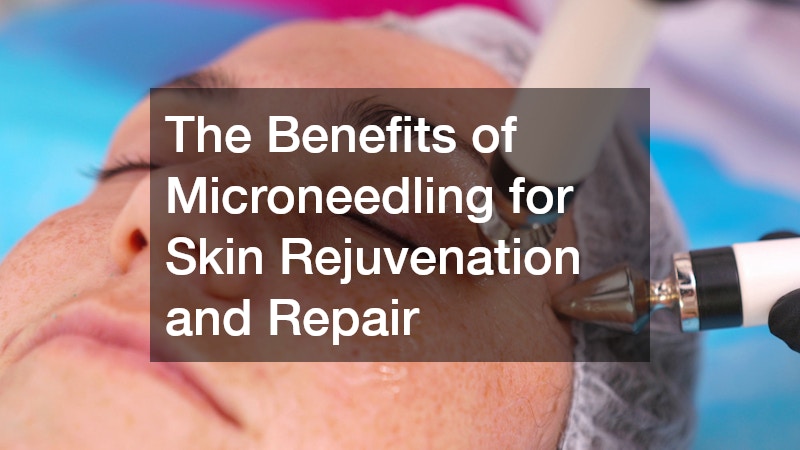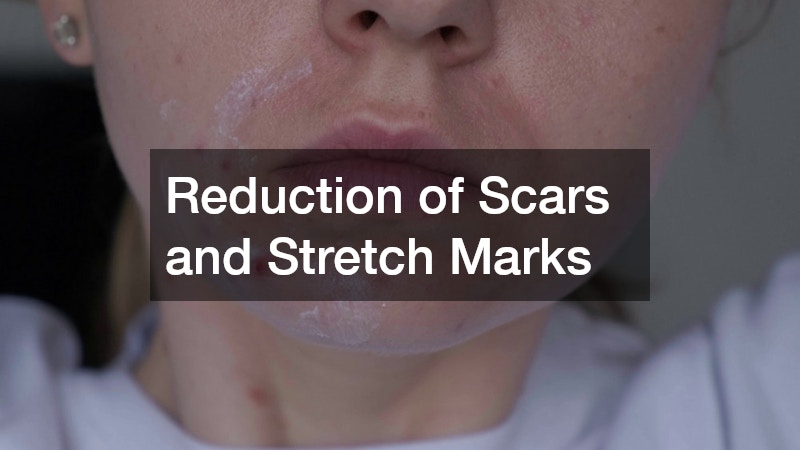
The Benefits of Microneedling for Skin Rejuvenation and Repair

Microneedling has gained attention as a popular skin rejuvenation treatment. This article explores its benefits, addresses common questions, and offers insight into why it’s becoming a go-to solution for skin repair.
Understanding the Procedure
Microneedling, also known as collagen induction therapy, is a minimally invasive cosmetic procedure. It involves the use of fine needles to create tiny, controlled punctures on the skin’s surface.
These micro-injuries stimulate the body’s natural wound healing processes, resulting in increased collagen and elastin production.
Collagen and elastin are essential proteins that contribute to maintaining skin structure and elasticity. By promoting their production, microneedling aids in enhancing skin texture and firmness. As a result, individuals often notice significant improvements in the overall appearance of their skin.
This procedure is typically performed by dermatologists or trained professionals using specialized devices. The depth and number of needle punctures can be adjusted depending on the specific concerns being addressed. The method is designed to be gentle yet effective, ensuring minimal damage to the skin while maximizing results.
Improved Skin Texture and Tone
Microneedling is renowned for refining skin texture, effectively minimizing the appearance of fine lines and wrinkles. By inducing collagen production, the treatment helps restore the skin’s youthful plumpness and suppleness. Consequently, many individuals find that their skin feels smoother and looks more radiant after microneedling sessions.
The procedure can also address uneven skin tone by reducing hyperpigmentation. As collagen rebuilds the skin structure, areas that previously showed signs of sun damage or age spots often become less noticeable. This contributes to a more uniform and luminous complexion.
Individuals with large pores may also benefit from microneedling. The procedure can reduce pore size by strengthening the surrounding collagen structure, giving the skin a more refined appearance. The cumulative result is an overall improvement in both skin texture and tone.
Reduction of Scars and Stretch Marks
Microneedling has been shown to be highly effective in reducing the appearance of acne scars and stretch marks. The collagen induction process aids in breaking down the fibrous tissue that gives scars their raised or sunken appearance. As new skin forms, these imperfections are gradually smoothed out.
This treatment is especially beneficial for those with atrophic scars, which are the result of acne or chickenpox. Clinical evidence suggests that repeated microneedling sessions can significantly improve the texture and appearance of these scars. The skin becomes more uniform, with a smoother surface noted over time.
Stretch marks, too, can benefit from the regenerative properties of microneedling. As the micro-injuries trigger healing processes, the skin’s thickness and elasticity improve. This leads to a reduction in the visibility and depth of stretch marks, providing a more even skin surface.
Common Side Effects
Microneedling is generally considered a safe procedure, though it can have some temporary side effects. Commonly, patients may experience redness and slight swelling akin to a mild sunburn post-treatment. These symptoms are usually short-lived, resolving within 24 to 72 hours.
Some individuals might also experience a feeling of tightness or slight discomfort in the treated area. These effects are normal and part of the skin’s natural response to the procedure. Using soothing products, such as aloe vera or calming masks, can alleviate these symptoms.
Because the procedure involves needle penetration, pinpoint bleeding might occur during treatment. However, this is typically minimal and ceases soon thereafter. Proper aftercare, guided by a professional, is essential for managing these common side effects effectively.
Possible Complications
While microneedling is largely safe, there are rare cases where complications can arise. Infection is a potential risk, particularly if the equipment is not adequately sterilized. This underscores the importance of choosing a reputable provider with stringent hygiene protocols.
Patients with a history of certain skin conditions, such as eczema or psoriasis, may not be suitable candidates for microneedling. These conditions can be aggravated by the procedure, leading to further skin irritation. It is also important to consider any allergies to topical products used during or after the treatment, as these can trigger reactions.
Scarring or hyperpigmentation is also a potential risk, especially for individuals prone to keloid formation or those with darker skin tones. Again, these risks can be effectively mitigated by ensuring treatment is conducted by qualified professionals who understand how to tailor the procedure to different skin types.
Safety Precautions and Considerations
Ensuring microneedling is performed by a licensed and experienced professional significantly minimizes risks. Prospective patients should consult with practitioners to determine their suitability and to develop a tailored treatment plan. Discussion of medical history and skin concerns is crucial during the initial consultation.
Microneedling is a versatile and effective treatment for skin rejuvenation. By understanding its procedure, benefits, and considerations, individuals can make informed decisions about incorporating it into their skincare regimen. With professional guidance and proper care, microneedling offers a promising solution for those seeking to enhance their skin health and appearance.



